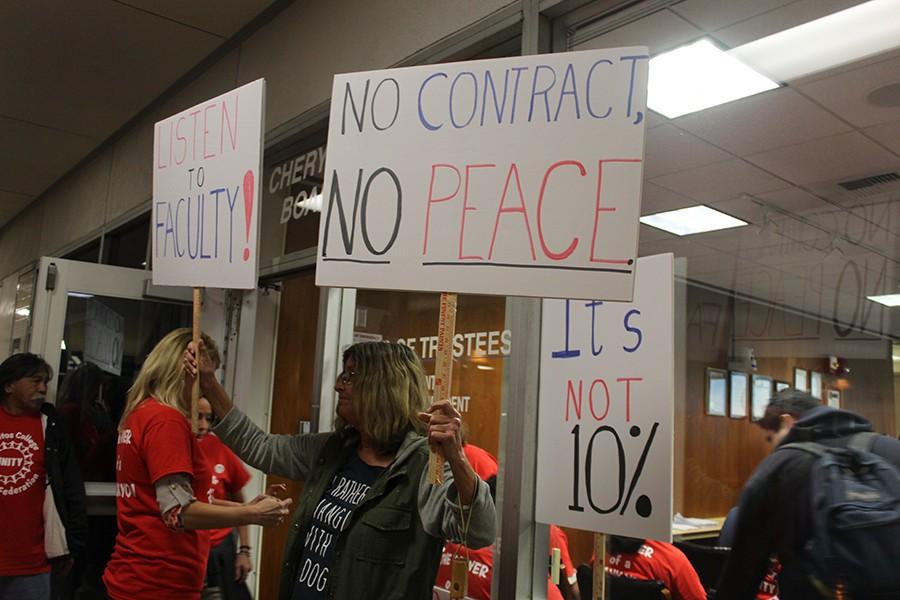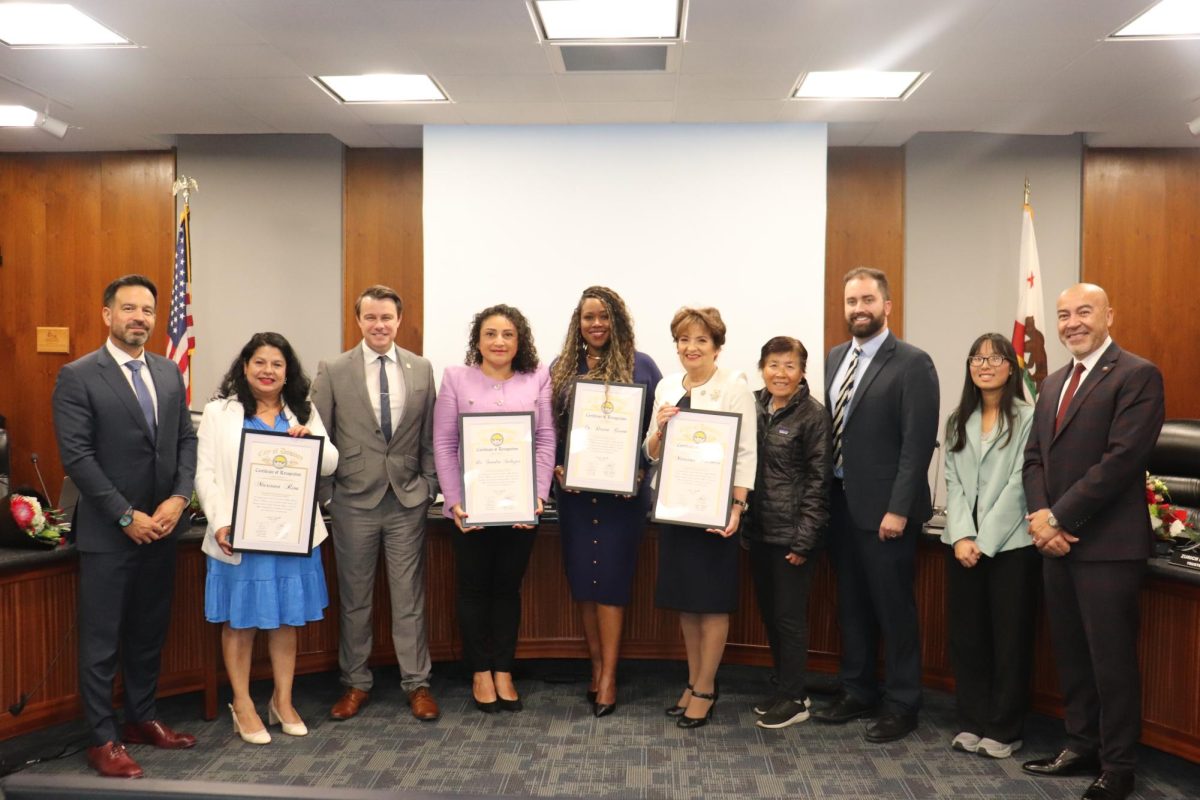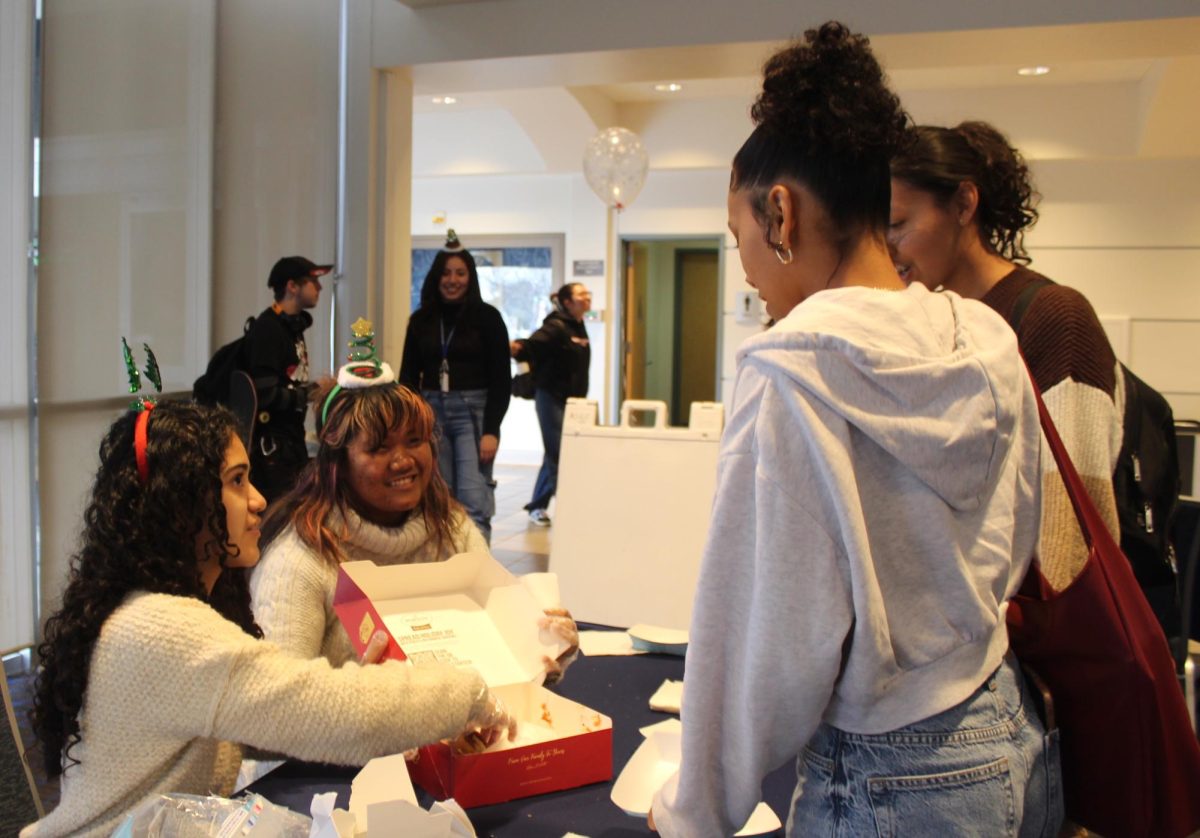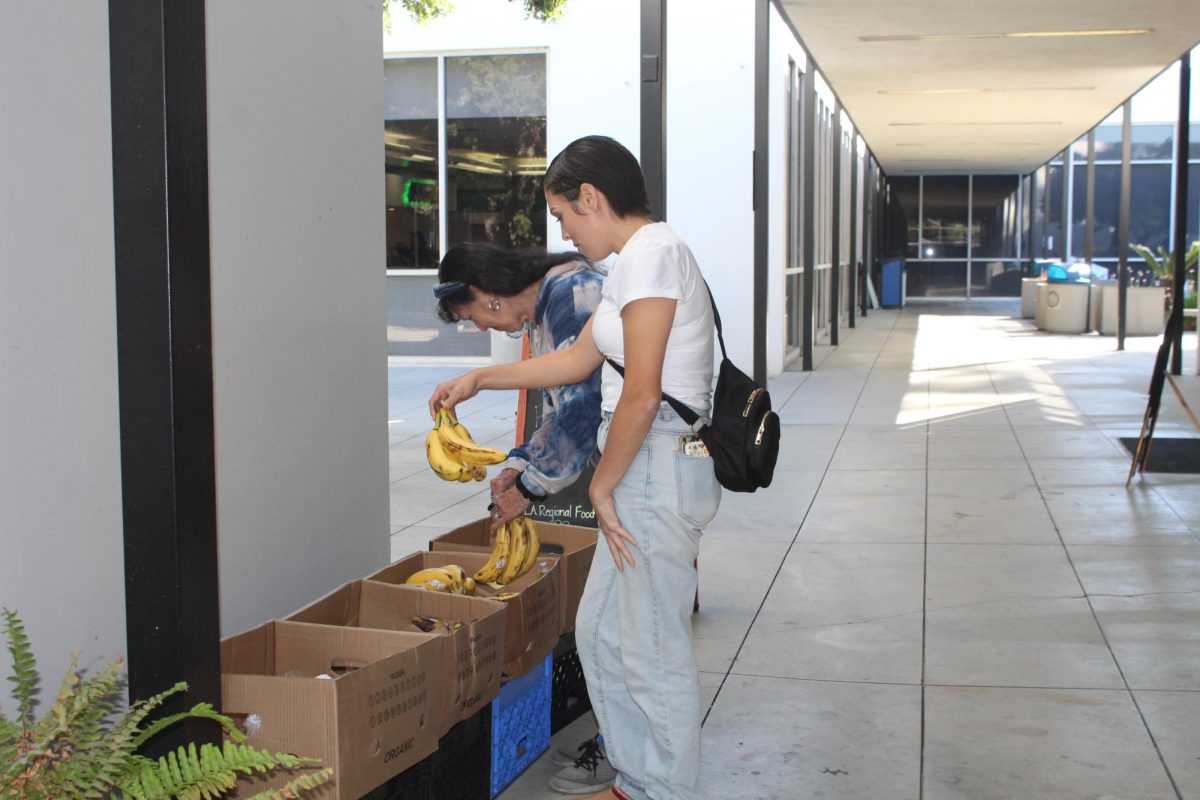For any given person walking into or around the Cheryl A. Epple board room on a rainy Wednesday, Feb. 17, a sea of red would have been visible.
According to Physical Education Instructor Deborah Jensen, about 85 faculty and 45 students clad in red shirts were in attendance at the rally organized by the Cerritos College Faculty Federation, which took place outside of the board room.
Although some chairs were vacant at the Cheryl A. Epple room, the majority of rally attendants stayed to support fellow faculty and instructors who gave public comment in support of faculty wage negotiations.
The negotiations have been ongoing and this is not the first time faculty has brought their concerns to the board.
An Incomplete Agreement.
What brought the Cerritos College Faculty Federation to rally and attend the meeting was the lack of a complete contract.
According to Solomon Namala, president of the faculty federation, some of the concern lies in class size, unpaid office hours, and lack of rules and regulations in terms of how faculty gets paid, for what they get paid, and duties and responsibilities.
“See, every school has a complete contract, we are the last community college without a complete contract,” Namala explained.
“Contracts cost money, yes, there are things that cost, but for 13 years they have been saying ‘We’ll get to this, we’ll get to this, and we’re at the point where we’re saying I’m tired of this.’”
He continued, “The fact that […] they’re holding our salary increase to this contract is the most worrisome thing. I think that is what pissed us off and we said ‘Ok, lets have a rally.’”
Vice President of the California Federation of Teachers Joanne Waddell, stated that she had never seen a situation like the one at Cerritos College.
“The fact that the Cerritos Faculty Association has been a legitimate local for thirteen years and does not have a signed contract is a situation I have never encountered.
“A contract is the heart and soul of a union, it is what makes us different from other faculty organizations and to not have a contract, is to not have that heart and soul and so were here to have that changed.”
Last Best and Final Offer.
The faculty federation president expressed that the federation presented a proposal and the district returned with their proposal saying it was their last best and final offer.
“Basically, according to that offer they said full time faculty will get a 5 percent increase in their pay this year, 2.5 next year and the year after 2.5. So, it is 10 percent over three years. It is the same for part-time faculty but half a percent more this year, they get 5.5 percent.”
The district also eliminated the first step for part-time faculty, which Namala expressed was a good thing.
“It adds another 2.5 to 4 percent increase on top of the five that they are giving. That is good, but we think that it is not enough for a couple of reasons.
Namala stated that the district did not add any of the steps that the faculty federation wanted for full-time and part-time faculty.
“If you look at the pay between us and a neighboring college like El Camino, it is like a $25 difference per hour, if we are getting $53 and hour, they are getting $78 an hour starting salary, even with this 5 percent bump or 7 percent bump, you add another four bucks to it, the gap is still 20 bucks.
“So, we think that at the very least cost of living (COLA) which the state funds, should be passed on to us on top of the 5 percent The COLA this year is only 1 percent.”
Cerritos College President Dr. Jose Fierro believes the faculty are being presented a competitive raise.
“Based on the data that I have seen on what other districts are providing, I think we are providing a pretty competitive raise, 10 percent over a period of three years will cost the district about 10.3/10.4 million in additional salaries.
“I believe the only other district that is getting close to that figure is Mount Sac. But everyone else is below that number.”
A Break in Communication.
The college president also believes there has been some miscommunication in the negotiation process.
“I feel that we’re not talking really, because like on the issue of the class size, I am fundamentally opposed to anything that is not in the best interest of student learning, but that was never brought to my attention,” he said.
“When the conversation started about 120 students in a microbiology class, I used to teach a microbiology class, solving the problem is not paying the instructors more, solving the problem is not having a class that big.”
Fierro is referring to a comment made by microbiology professor Rojas, who stated that one of the lectures she teaches has 90 students, the other has 60 students, and other lectures taught have 60 to 120 students.
The college president believed there was some language that needed to be clarified.
“We’re having some miscommunication issues, there is some language that needs to be clarified because the board has clearly stated that there is not an issue with summer office hours, but it is the understanding that there is a problem, so we need to clarify.
“I think we need to communicate better. I mean it is nice to see people engage, but I think we all want the best for the students, and we are arguing over something that we all seem to agree on.”
Student Trustee Victor Villalobos expressed, “I think its necessary, when it comes to their wages […], that’s what they are fighting for, at the same time they are fighting for student conditions, whether it be office hours, class sizes, courses available to us, in a sense they are fighting for our future.
“That’s why I find it so necessary for them to be here, for them to make the noise, to be able to get what they need to better serve the students.”










